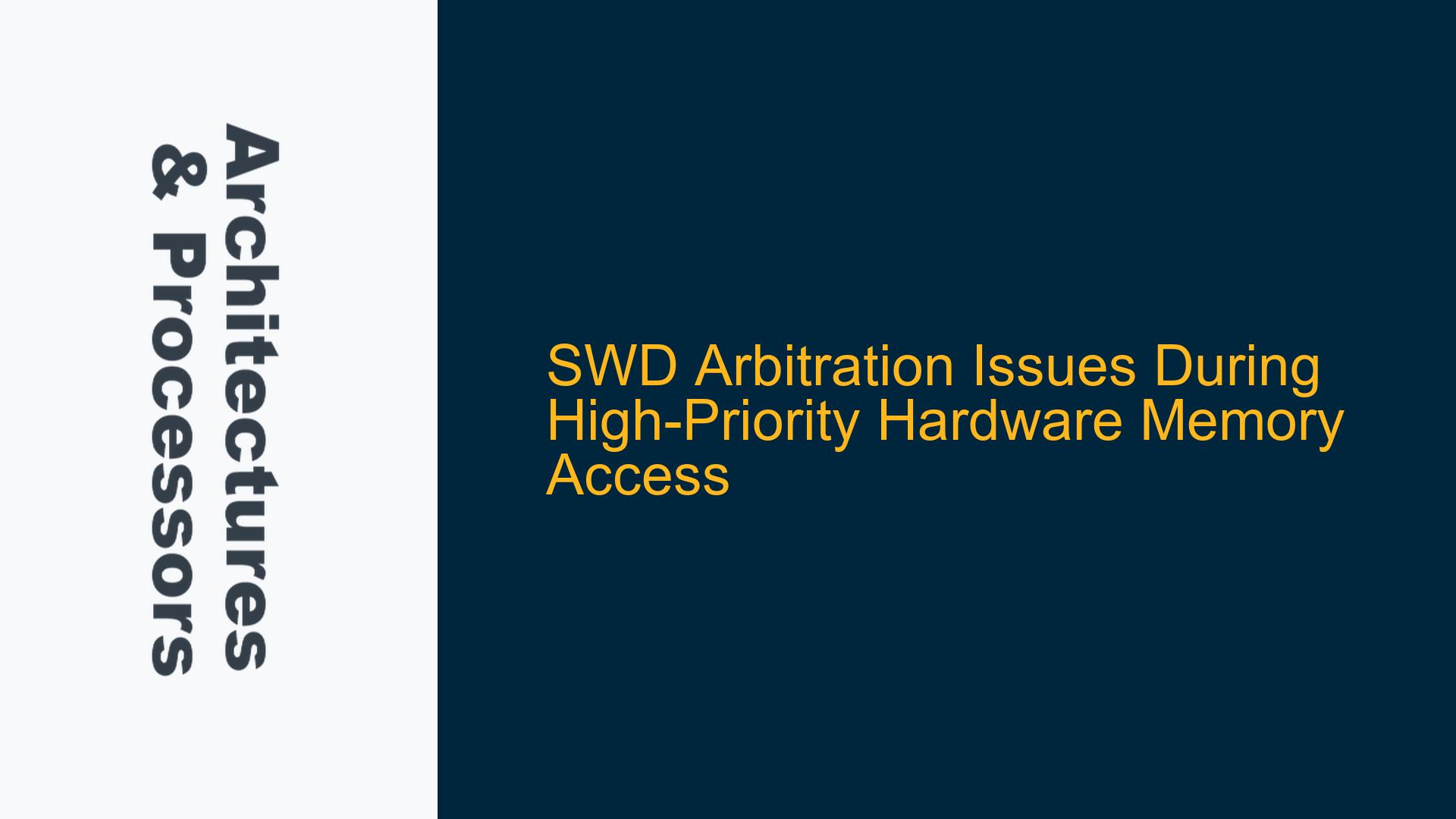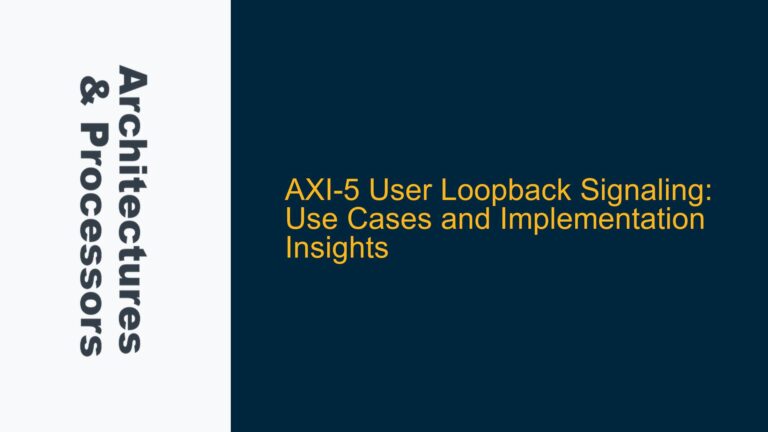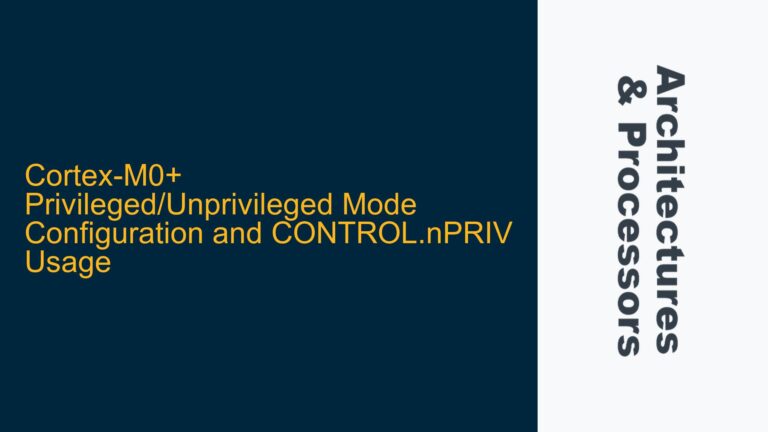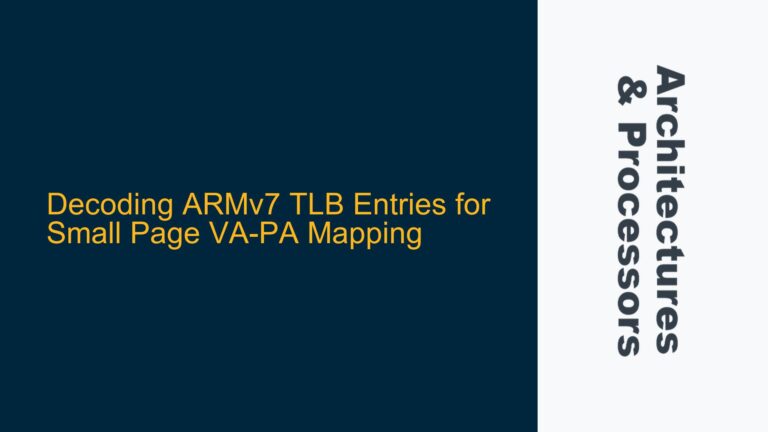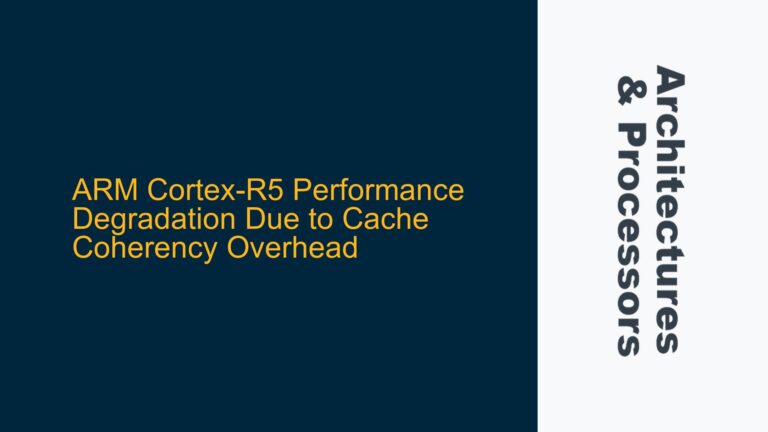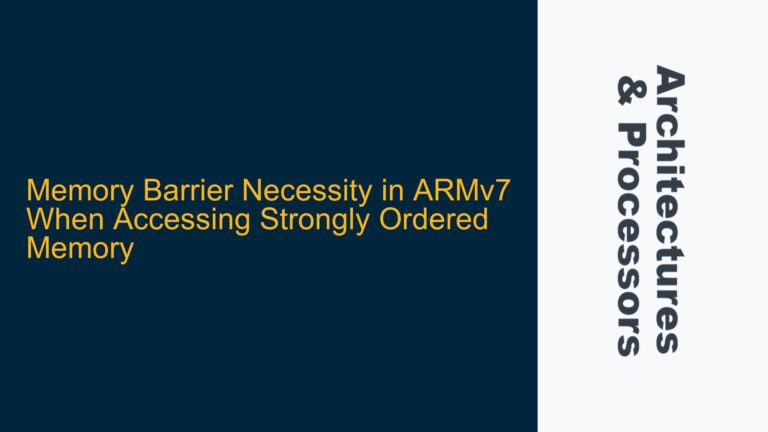SWD Communication Random Read Values Under High Hardware Memory Contention
When using Serial Wire Debug (SWD) to read memory locations that are also heavily accessed by hardware, a common issue arises where the SWD interface occasionally returns random or incorrect values. This problem is particularly pronounced in systems where hardware (HW) memory access is given higher priority over SWD communication. The core of the issue lies in the arbitration mechanism between the SWD debugger and the hardware accessing the same memory resources.
In ARM-based systems, SWD is a two-pin interface (SWDIO and SWCLK) used for debugging and programming. It operates by sending packets to read or write memory, registers, and other debug-related resources. However, when the memory being accessed is also frequently accessed by hardware, the SWD interface may not always receive the correct data due to contention. This is especially true when the hardware has a higher priority, causing the SWD interface to either wait indefinitely or receive stale or corrupted data.
The random values observed during SWD reads are a direct consequence of this arbitration issue. The SWD protocol does not inherently include a mechanism to ensure data coherency when multiple entities are accessing the same memory. Instead, it relies on the system’s memory controller and arbitration logic to manage access. If the arbitration logic prioritizes hardware access over SWD, the debugger may read memory locations that are in an inconsistent state, leading to random or incorrect values.
This issue is further exacerbated in systems where the hardware access rate is high (~75% of the time, as mentioned in the scenario). In such cases, the SWD interface may struggle to gain access to the memory bus, resulting in delayed or failed reads. The problem is not limited to random values; it can also manifest as timeouts or complete communication failures between the debugger and the target device.
Understanding the root cause of this issue requires a deep dive into the memory arbitration mechanisms, the SWD protocol, and the interaction between hardware and software in ARM-based systems. The following sections will explore the possible causes of this behavior and provide detailed troubleshooting steps and solutions to mitigate the issue.
Memory Arbitration Logic and SWD Protocol Limitations
The primary cause of the random read values during SWD communication lies in the memory arbitration logic and the limitations of the SWD protocol. In ARM-based systems, memory arbitration is handled by the memory controller, which manages access to shared memory resources between multiple masters, such as the CPU, DMA controllers, and peripherals. The arbitration logic determines which master gets access to the memory bus at any given time, based on predefined priorities.
In the scenario described, the hardware accessing the memory has a higher priority than the SWD interface. This means that when both the hardware and the SWD interface attempt to access the same memory location simultaneously, the memory controller will grant access to the hardware first. The SWD interface must wait until the hardware completes its access, which can lead to delays or timeouts.
The SWD protocol itself does not include mechanisms to handle such contention. It assumes that the memory access will be granted in a timely manner and does not account for scenarios where the memory bus is heavily contended. As a result, when the SWD interface is forced to wait for the hardware to complete its access, the debugger may read stale or corrupted data, leading to the random values observed.
Another factor contributing to this issue is the lack of data coherency mechanisms in the SWD protocol. Unlike other communication protocols that include handshaking or acknowledgment mechanisms to ensure data integrity, SWD relies on the memory controller to manage access and ensure that the data read is consistent. In systems where the memory access is highly contended, this assumption may not hold, leading to inconsistent or incorrect data being read by the SWD interface.
Additionally, the timing of memory access plays a critical role in this issue. If the hardware access rate is high, the SWD interface may not have enough time to complete its read operation before the memory controller grants access to the hardware again. This can result in partial reads or reads that occur while the memory is being updated by the hardware, leading to random or incorrect values.
Implementing Memory Access Synchronization and SWD Protocol Enhancements
To address the issue of random read values during SWD communication under high hardware memory contention, several steps can be taken to improve memory access synchronization and enhance the SWD protocol’s robustness. These solutions involve both hardware and software modifications to ensure that the SWD interface can reliably access memory even in highly contended scenarios.
Memory Access Synchronization
One of the most effective ways to mitigate this issue is to implement memory access synchronization mechanisms that ensure the SWD interface can access memory without contention. This can be achieved by introducing a semaphore or mutex mechanism that controls access to the memory locations being accessed by both the hardware and the SWD interface.
In this approach, the hardware and the SWD interface must acquire the semaphore before accessing the shared memory. The semaphore ensures that only one entity can access the memory at a time, preventing contention and ensuring data coherency. When the hardware acquires the semaphore, the SWD interface must wait until the semaphore is released before attempting to read the memory. Similarly, when the SWD interface acquires the semaphore, the hardware must wait until the SWD interface completes its read operation.
Implementing this synchronization mechanism requires modifications to both the hardware and the software. The hardware must be designed to support semaphore acquisition and release, while the software must be updated to include the necessary logic to handle semaphore operations. This approach ensures that the SWD interface can reliably access memory without encountering random or incorrect values due to contention.
SWD Protocol Enhancements
Another approach to addressing this issue is to enhance the SWD protocol to include mechanisms for handling memory contention. This can be achieved by introducing a retry mechanism in the SWD protocol that allows the debugger to retry the read operation if it encounters contention.
In this approach, when the SWD interface attempts to read a memory location and encounters contention, it will wait for a predefined period before retrying the read operation. This allows the hardware to complete its access, ensuring that the SWD interface can read the memory without contention. The retry mechanism can be implemented in the debugger software, which will handle the retries and ensure that the correct data is read
